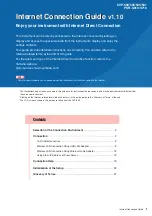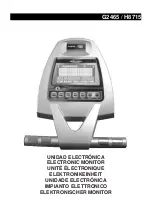
FX Algs #156-160: Phasers
Algorithm Reference-62
FX Algs #156-160: Phasers
FXAlg #156: LFO Phaser
FXAlg #157: LFO Phaser Twin
FXAlg #158: Manual Phaser
FXAlg #159: Vibrato Phaser
FXAlg #160: SingleLFO Phaser
A variety of single notch/bandpass Phasers
Allocation Units:
1 (each)
A simple phaser is an algorithm which produces a vague swishing or phasey effect. When the phaser signal is
combined with the dry input signal or the phaser is fed back on itself, peaks and/or notches can be produced in the
filter response making the effect much more pronounced. Most of the phaser algorithms presented here have built
in low frequency oscillators (LFOs) to generate the motion of the phasers. In the case of Manual Phaser, the phaser
motion is left to the user.
One channel of a typical phaser
A phaser uses a special filter called an all-pass filter to modify the phase response of a signalÕs spectrum without
changing the amplitude of the spectrum. As the name suggests, an all-pass filter by itself does not change the
amplitude of the frequency response of a signal passing through itÑit does not cut or boost any frequencies. It does
cause some frequencies to be delayed a little in time, and this small time shift is also known as a phase change. The
frequency where the phase change has its greatest effect is a parameter that you can control. By modulating the
frequency of the phaser, you get the swishy phaser sound. With a modulation rate of around 6 Hz, an effect similar
to vibrato may be obtained, but only in a limited range of filter frequencies.
By adding the phaser output to the dry input using, for example, a Wet/Dry parameter, you can produce peaks and
notches in the frequency response. At frequencies where the phaser is Òin phaseÓ with the dry signal, the signal level
doubles (or there is a 6 dB level increase approximately). At frequencies where the phaser and dry signals are Òout
of phaseÓ, the two signals cancel each other out and there is a notch in the frequency response. You can get a
complete notch when Wet/Dry is set to 50%. If subtraction is used instead of addition by setting Wet/Dry to -50%,
then the notches become peaks and the peaks become notches.
AP
Input
Output
Dry
Wet
Feedback
















































